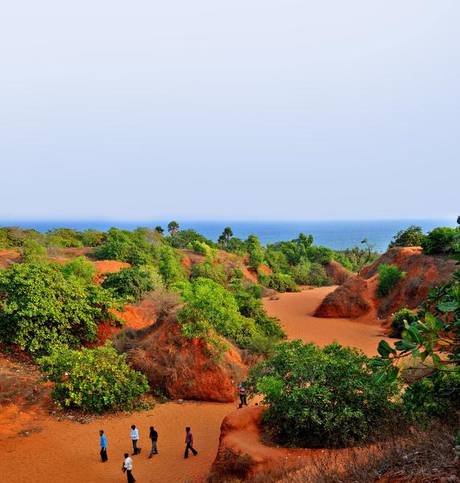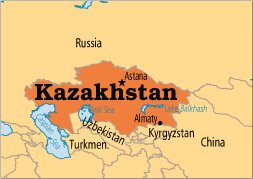Governance
Regulating Right to Freedom of Religion
The High Court of Karnataka has issued guidelines to all city municipal corporations regarding granting permission for temporarily using public roads and footpaths.
- Major Observation:
- The right under Article 25 (freedom to the free profession, practice and propagation of religion) of the Constitution of India does not extend to public road and footpath.
- One cannot get the rights to use public roads and streets just because it is for religious purposes.
- Inspection is Mandatory:
- Authorities cannot mechanically process applications filed under the State Municipal Corporations Act for grant of permission to temporarily use public roads or footpaths for any purposes, including for the celebration of religious festivals or functions.
- The authorised officers will have to compulsorily inspect the premises, including roads and footpaths, and will have to take a report from the traffic police on the impact on traffic, before granting any permission.
- Putting up temporary structures can be permitted only after ensuring that such structures would not cause any obstruction to the free flow of traffic or curtail the right of citizens to free use of footpaths.
- The corporations have been directed not to permit digging up of roads or footpaths while granting permission to put up temporary structures.
- The Supreme Court has already held that it is a fundamental right of citizens to use public roads for passage of vehicles, and footpaths to walk (in line with Article 21 of the Constitution).
- Display of the Permission at the Location:
- The copy of the permission and conditions imposed for putting up temporary structures, including the period of permission, should be displayed prominently by those to whom the permission has been granted.
- Any structures not displaying a copy of the permission can be treated as illegal and removed.
Article 25: Freedom of Conscience and Free Profession, Practice and Propagation of Religion
- Fundamental Right Enshrined: Article 25 says that all persons are equally entitled to freedom of conscience and the right to freely profess, practice and propagate religion.
- The implications of this are:
- Freedom of conscience: Inner freedom of an individual to mould his relation with God or Creatures in whatever way he desires.
- Right to Profess: Declaration of one’s religious beliefs and faith openly and freely.
- Right to Practice: Performance of religious worship, rituals, ceremonies and exhibition of beliefs and ideas.
- Right to Propagate: Transmission and dissemination of one’s religious beliefs to others or exposition of the tenets of one’s religion.
- Scope:
- Article 25 covers religious beliefs (doctrines) as well as religious practices (rituals).
- Moreover, these rights are available to all persons—citizens as well as non-citizens.
- Restrictions:
- These rights are subject to public order, morality, health and other provisions relating to fundamental rights.
- The State is permitted to regulate or restrict any economic, financial, political or other secular activity associated with religious practice.
Article 21: Protection of Life and Property
- It declares that no person shall be deprived of his life or personal liberty except according to the procedure established by law.
- This right is available to both citizens and non-citizens.
Governance
Rural Sanitation Strategy: 2019-2029
Recently, the Department of Drinking Water and Sanitation (DDWS) under the Ministry of Jal Shakti has launched the 10-year Rural Sanitation Strategy starting from 2019 up to 2029.
- The strategy has been prepared by DDWS, in consultation with the State Governments and other stakeholders.
- It lays down a framework to guide local governments, policy-makers, implementers and other relevant stakeholders in their planning for Open Defecation Free (ODF) Plus status, where everyone uses a toilet, and every village has access to solid and liquid waste management.
- The strategy aims to sustain the behavioral change regarding sanitation that has been achieved under the Swachh Bharat Mission Grameen (SBM-G) and ensure that the focus is shifted to increasing access to solid and liquid waste management in the rural areas of the country.
- The 10-year strategy also demands focused intervention through capacity strengthening, IEC (Information, Education, and Communication), organic waste management, plastic waste management, and water management.
- Public financing has played an important role in the ODF journey but for the maintenance of toilets and infrastructure, the need is there for innovative models for sanitation financing.
- With regard to waste management elements, there will have to be a convergence of funds from the Centre, states, Panchayati raj institutions (PRIs) and alternative sources of financing, including private funds.
- Discussions are still underway on the budget requirement and whether funds will be disbursed via a centrally sponsored scheme or through Finance Commission transfers to PRIs.
- The strategy highlights the potential collaborations with development partners, civil society and intergovernmental partnerships.
Open Defecation Free (ODF), ODF+, ODF++ Status
- ODF: An area can be notified or declared as ODF if at any point of the day, not even a single person is found defecating in the open.
- ODF+: This status is given if at any point of the day, not a single person is found defecating and/or urinating in the open, and all community and public toilets are functional and well maintained.
- ODF++: This status is given if the area is already ODF+ and the faecal sludge/septage and sewage are safely managed and treated, with no discharging or dumping of untreated faecal sludge and sewage into the open drains, water bodies or areas.
Background
- India has seen a sanitation revolution in the form of SBM-G that transformed itself into a Jan Andolan (a people’s movement).
- Since the launch of the SBM-G in 2014, over 10 crore toilets have been built in rural areas.
- Till now, over 5.9 lakh villages in 699 districts and 37 States/UTs have declared themselves as Open Defecation Free (ODF).
Way Forward
- It is because of the SBM-G that India is now an inspiration, in terms of sanitation for other countries.
- To mark the 150th birth anniversary of Mahatma Gandhi on 2nd October 2019, the Central government is ready to dedicate a Swachh Bharat to India.
- To ensure this, the State Governments have been advised to take a note that no one is left behind, and in case any household does not have access to a toilet, they are facilitated to build a toilet on priority.
Governance
Silicosis and Mining Safety
Saharia tribe miners in Madhya Pradesh have appealed to the government to treat them for silicosis rather than Tuberculosis.
- Recently the sandstone mining industry in Rajasthan also demanded modernization of working conditions in mining and quarrying areas.
- Silicosis is more prevalent among miners who are exposed to dust containing crystallized silica which turns quarrying and mining villages into “widow villages”.
- Maximum miners in these states do not have any identity proof and cannot make a thumb impression on government documents since their fingerprints have faded.
Silicosis
- Silicosis is one of the most prevalent occupational health illnesses in the world.
- It is a progressive lung disease caused by inhalation of silica over a long period of time.
- Silicosis is characterized by shortness of breath, cough, fever and bluish skin.
- Silicosis is an incurable condition with its potential to cause permanent physical disability.
- Silicosis occurs most commonly in people working in the quarrying, manufacturing, and building construction industries.
- Silica (SiO2/silicon dioxide) is a crystal-like mineral found in abundance in sand, rock, and quartz.
- It is also reported from the population with non-occupational exposure to silica dust from industrial as well as nonindustrial sources.
- Exposure to large amounts of free silica may not be noticed because silica is odourless, non-irritant and does not cause any immediate health effects, but long-term exposure is associated with pneumoconiosis, lung cancer, pulmonary tuberculosis, and other lung diseases.
- Diagnosis is a challenge because it is difficult to even find out if a person has tuberculosis or silicosis.
- The nodules that collect to form a mass can take up to 20 years to be identified in chest x-rays and the victim notices symptoms only after many years of exposure to silica.
- Steps taken by Government of India to reduce and to prevent incidents of Silicosis include:
- In India, more than 10 million workers are at risk of silicosis and thus it is recognized as occupational diseases by the Factories Act and Employees Compensation Act, which mandates employers must pay compensation to workers who are afflicted.
- In India silicosis is prevalent in Gujarat, Rajasthan, Pondicherry, Haryana, Uttar Pradesh, Bihar, Chhattisgarh, Jharkhand, Orissa and West Bengal among the workers of construction and mining.
- Factory Act of India (1948) mandates a well-ventilated working environment, provisions for protection from dust, reduction of overcrowding and provision of basic occupational health care.
- Silicosis is a notified disease under the Mines Act (1952) and the Factories Act (1948).
- In India, more than 10 million workers are at risk of silicosis and thus it is recognized as occupational diseases by the Factories Act and Employees Compensation Act, which mandates employers must pay compensation to workers who are afflicted.
Saharia Tribe
- Most of the Saharia (or Sor) of India live in the state of Madhya Pradesh. But also found Odisha, Andhra Pradesh, Bihar, Tamil Nadu, West Bengal, Rajasthan and the Plains division of Assam.
- They speak the Munda language that belongs to the Austro-Asiatic language family.
- The Saharia tribe is divided based on occupation into five sub-tribes:
- The Arsi are weavers.
- The Muli are ironworkers.
- The Kindal are basket makers.
- The Kumbi are potters.
Indian Economy
Unitary Taxation System for Multi-National Enterprises
Recently, the United Nations Conference on Trade and Development (UNCTAD’s) in its Trade and Development Report 2019 has recommended for the adoption of a unitary taxation system for the Multi-National Enterprises (MNEs).
- The theme of the report was ‘Financing a Global Green New Deal’.
- The report stated that such an approach would simplify the global taxation system and is expected to increase tax revenues for all countries.
- The report took cognizance of the fact that the profits of MNEs are generated collectively at the group level. Hence, unitary taxation should be applied by combining it with a global minimum effective corporate tax rate on all MNE profits.
- There was a dire need for this change, as the current international corporate taxation norms consider affiliates of MNEs as independent entities and treat taxable transactions between different entities of MNEs as unrelated.
- This move facilitates the tax-motivated illicit financial flows.
- According to the report, the tax-motivated illicit financial flows of MNEs are estimated to deprive developing countries of $50 billion to $200 billion a year in terms of the fiscal revenues.
- The report also highlights that the fiscal revenues of a country could be augmented through fair taxation of the digital economy. The rapid digitalization of economic activities is changing the way how values are created, measured and distributed, adding new challenges to the international tax framework.
United Nations Conference on Trade and Development (UNCTAD)
- UNCTAD is a permanent intergovernmental body established by the United Nations General Assembly in 1964.
- Its headquarters are located in Geneva, Switzerland.
- It is part of the UN Secretariat.
- It reports to the UN General Assembly and the Economic and Social Council, but UNCTAD has its own membership, leadership, and budget. It is also a part of the United Nations Development Group.
- It supports developing countries to access the benefits of a globalized economy more fairly and effectively. Along with other UN departments and agencies, it also measures the progress made in the Sustainable Development Goals, as set out in Agenda 2030.
- Some of the reports published by UNCTAD are:
- Trade and Development Report
- World Investment Report
- Technology and Innovation Report
- Digital Economy Report
Important Facts For Prelims
Erra Matti Dibbalu
Erra Matti Dibbalu is dissected and stabilized coastal red sediment mounds, located between Visakhapatnam and Bheemunipatnam in Andhra Pradesh.
- Formation:

- Formed around 12,000 years ago due to sea-land interaction.
- Comprises a mixture of sand (40-50%), silt and clay (another 50%) with oxidation imparting the unique red colour.
- Significance:
- They are geologically important as they represent the geological history of the late Quaternary period and carry the imprints of the fall of sea level and its subsequent rise, the impact of climate, monsoon and geological processes on the sediments.
- They are anthropologically and archeologically important as they possibly contain mesolithic and neolithic cultural materials as well.
- Recognition:
- It was recognised as a national geo-heritage site in 2014 and as a protected site by the Andhra Pradesh Government in 2016.
- The Geological Survey of India (GSI) declares geo-heritage sites/ national geological monuments for protection and maintenance
- It was recognised as a national geo-heritage site in 2014 and as a protected site by the Andhra Pradesh Government in 2016.
- Other Similar Place: The only other place in the country to have a similar stretch of red sand dunes is Tamil Nadu, which has the Teri dune complex.
Geological Survey of India
- The Geological Survey of India (GSI) was set up in 1851 primarily to find coal deposits for the Railways.
- The main functions of the GSI relate to creation and updation of national geo-scientific information and mineral resource assessment.
- It is headquartered in Kolkata, and has six regional offices located at Lucknow, Jaipur, Nagpur, Hyderabad, Shillong and Kolkata and State Unit offices in almost all States of the country.
- Presently, GSI is an attached office to the Ministry of Mines.
Important Facts For Prelims
Exercise KAZIND - 2019
Joint Military Exercise KAZIND-2019 between India and Kazakhstan will be conducted in Uttarakhand, India.
- It is the fourth edition of an annual event that is conducted alternatively in Kazakhstan and India.
- During the exercise, armies of both countries would be sharing their experience gained during the conduct of various counter-insurgency and counter-terrorism operations.
- The aspects of emerging trends of hybrid warfare have also been included under exercise.
- The joint military exercise will enhance the level of defence cooperation further fostering bilateral relations between the two nations.
Hybrid Warfare
- Hybrid Warfare refers to the use of unconventional methods as part of a multi-domain warfighting approach that aims to disrupt and disable an opponent’s actions without engaging in open hostilities.
- Russia’s approach to Ukraine is an example of this form of warfare. It has involved a combination of activities, including disinformation, economic manipulation, use of proxies and insurgencies, diplomatic pressure and military actions.
Important Facts For Prelims
Goldschmidtite
Recently a new mineral has been discovered inside a diamond unearthed from a mine in South Africa.
- It has been found in Earth’s Mantle (A part of Interior of the Earth) which covers 80% of earth’s volume.
- Goldschmidtite has high concentrations of niobium, potassium and the rare earth elements lanthanum and cerium.
- The found single grain is dark green in colour and opaque.
- The mineral has been named after the Norwegian scientist Victor Moritz Goldschmidt, who is considered as the founder of Modern Geochemistry.




